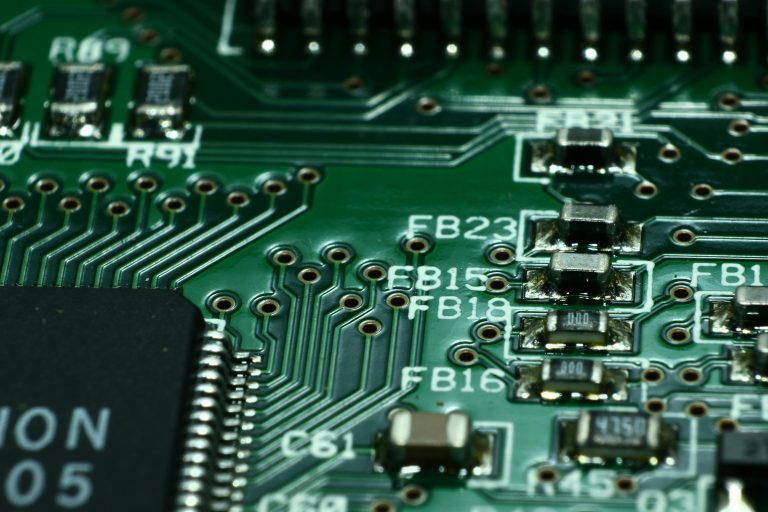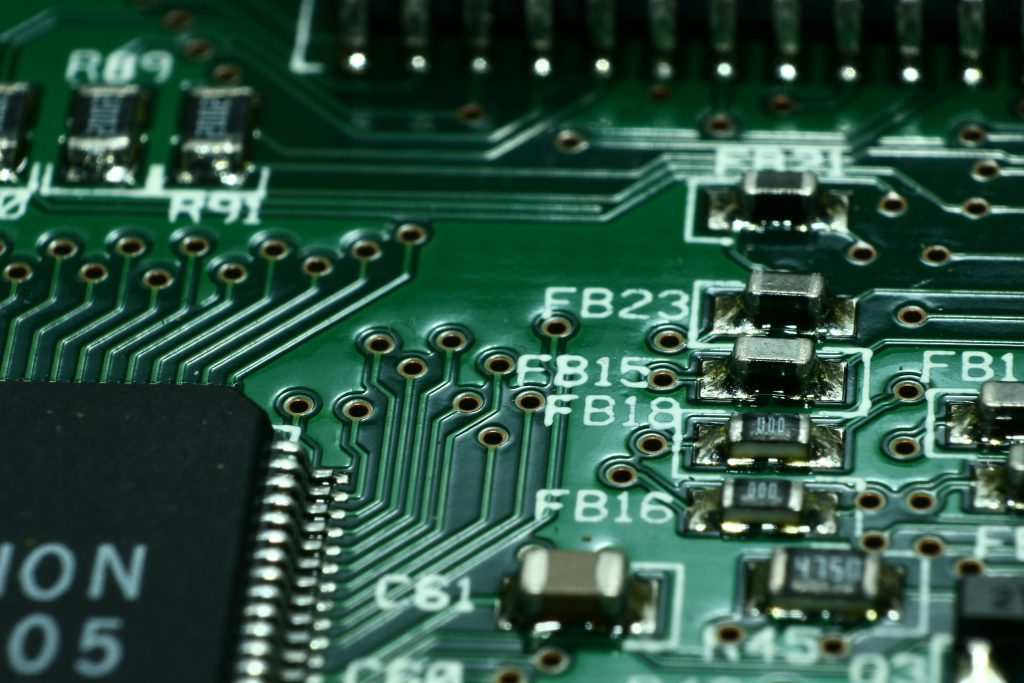Setup and Optimize the National Instruments PXI-5441 Waveform Generator
The National Instruments PXI-5441 is a powerful PXI waveform generator designed to support high-speed waveform downloads up...


The integration of many programming languages and tools is crucial in the dynamic landscape of test environments, especially in the aerospace and defense industries, to optimize efficiency and precision. Python, which is praised for its vast library and adaptability, and LabVIEW, a program well-known for its graphical programming capabilities, often need to function well together The solution is ChatGPT-4, an AI-powered application that can improve functionality and communication in test environments utilizing legacy National Instruments equipment by bridging the gap between these two potent languages.
It is more important than ever to have diverse programming languages and environments work together in today’s quickly changing technological landscape. Python and LabVIEW‘s smooth integration is not only useful but essential for engineers and developers that operate in test environments. Python’s large libraries for data processing and visualization and LabVIEW’s strong data collecting capabilities make these two complimentary technologies vital for effective testing and validation procedures.
However, there is a big obstacle to overcome in order to connect these two platforms. Python must be able to easily translate the complex logic and code structures present in LabVIEW, while also guaranteeing consistency and dependability throughout the test environment. Any interruptions or inefficiencies in this integration process have the potential to obstruct development, reduce output, and jeopardize the reliability of test findings. In this kind of situation, ChatGPT-4’s function as a communication bridge between LabVIEW and Python becomes essential. Engineers can now fully utilize LabVIEW and Python thanks to ChatGPT-4, which simplifies the integration process and provides customized solutions to overcome technical obstacles. This leads to increased productivity and innovation in test settings.
Different Paradigms
Python and LabVIEW use essentially distinct paradigms to function. National Instruments’ LabVIEW is well-known for its graphical programming environment, which allows programmers to connect functional blocks in an interface that resembles a flowchart to create programs. For engineers who want a more concrete depiction of their processes, this visual method makes perfect sense.
Python, on the other hand, is a text-based scripting language that is renowned for being both easy to use and flexible. Python programming is written line-by-line, which makes it more abstract than LabVIEW’s visual blocks. Because of these divergent paradigms, developers may find it challenging to switch between the two environments with ease.
Data Exchange
Another concern is making sure that data exchanges between LabVIEW and Python are quick and seamless. Every language handles data types, structures, and communication protocols differently. Python’s built-in data structures might not be immediately compatible with LabVIEW’s unique data format. Because of this incompatibility, data sharing must be facilitated by the use of conversion scripts or intermediary solutions. Creating these solutions can take a lot of time and be error-prone, particularly when working with big or complex datasets.
Legacy Systems
Various test environments use legacy systems that were developed and put into use decades or even longer ago. Since these systems are in many cases essential to operations, any modifications or integrations must be done carefully to minimize interruptions.
It could potentially be challenging to integrate new solutions with legacy systems since they may not support the most recent software updates or integration tools. It can be especially difficult to integrate Python into these systems if the current infrastructure is largely dependent on LabVIEW and its unique features.
Compatibility and Stability
Maintaining compatibility and stability across different platforms and versions is crucial. LabVIEW and Python both have multiple versions, and ensuring that the versions used are compatible with each other and with the legacy equipment can be complex. Additionally, changes in one system might lead to unexpected issues in the other, necessitating extensive testing and validation.
By understanding these challenges, organizations can better prepare for the integration process, implementing strategies and tools—like ChatGPT-4—that can help mitigate these difficulties and achieve errorless communication between LabVIEW and Python in their test environments.
Integrating LabVIEW with Python presents a multifaceted challenge, but ChatGPT-4 emerges as a versatile ally in navigating this complex terrain. Offering a suite of capabilities tailored to streamline and simplify the integration process, ChatGPT-4 stands ready to assist developers at every step of the journey.
At the core of its prowess lies its ability to translate LabVIEW logic seamlessly into Python code structures. By deciphering the graphical representation inherent in LabVIEW and generating corresponding Python scripts, ChatGPT-4 ensures that the logic and functionality remain intact, bridging the gap between these two programming environments. Furthermore, it adeptly adapts syntax and structures, harmonizing data handling and function implementation to maintain consistency and reliability across platforms.
Script automation represents another frontier where ChatGPT-4 shines brightly. Through its automation capabilities, ChatGPT-4 empowers developers by generating boilerplate code and custom scripts that facilitate communication between LabVIEW and Python. By standardizing procedures and templates, it promotes consistency and adherence to best practices, thereby reducing errors and enhancing maintainability. Moreover, its proficiency in automating repetitive tasks not only enhances efficiency but also minimizes the likelihood of human errors, freeing developers to focus on more strategic aspects of integration.
When it comes to troubleshooting, ChatGPT-4 is a great resource for direction and assistance. Equipped with the capacity to identify problems through the examination of error messages, logs, and code, it provides instantaneous fixes and suggestions that are customized to the particular situation and type of issue. Because of its ability to learn continuously, it may adapt over time and provide increasingly pertinent and accurate advise based on prior experiences. This makes it a priceless tool for ongoing maintenance and integration activities.
By harnessing ChatGPT-4’s capabilities for code translation, script automation, and troubleshooting, organizations can revolutionize their integration processes between LabVIEW and Python. This not only simplifies technical challenges but also empowers engineers to optimize and innovate within their test environments, ultimately leading to more effective and robust systems.
Integrating LabVIEW and Python using ChatGPT-4 can be streamlined by following a structured approach. Here’s a step-by-step guide to facilitate this integration:
1. Identify the Communication Needs
•Start by identifying the specific tasks and processes that require integration between LabVIEW and Python. This could include data exchange, real-time monitoring, or automated test sequences.
•Clearly define the objectives of the integration. What do you hope to achieve by enabling communication between LabVIEW and Python? This will guide the subsequent steps and ensure that the integration aligns with your goals.
2. Leverage ChatGPT-4 for Code Generation
•Use ChatGPT-4 to generate code snippets that enable communication between LabVIEW and Python. This includes writing scripts for data exchange, calling Python functions from LabVIEW, and vice versa.
•Make sure the generated code snippets account for compatibility in data types and structures. ChatGPT-4 can help translate and adapt these elements to ensure smooth communication.
•Customize the generated code to fit the specific requirements of your test environment. ChatGPT-4 can provide templates and examples that can be tailored to your needs.
3. Implement and Test
•Integrate the ChatGPT-4 generated code into your test environment. This involves embedding the scripts into your existing LabVIEW and Python workflows.
•Perform comprehensive testing to ensure that the integration operates seamlessly. Test various scenarios to verify that data is being exchanged correctly and that the systems are communicating as expected.
•Implement an iterative testing approach, where you continuously refine and test the integration to address any initial issues and optimize performance.
4. Optimize and Troubleshoot
•Use ChatGPT-4 to continuously optimize the integration. This includes refining the code for efficiency, improving data handling, and ensuring robust communication.
•Actively monitor the integrated system to identify any issues that arise. ChatGPT-4 can assist in diagnosing problems by analyzing error logs, performance metrics, and user feedback.
•Employ ChatGPT-4’s troubleshooting capabilities to resolve issues promptly. It can suggest code modifications, alternative approaches, and provide step-by-step guidance for debugging.
•Maintain thorough documentation of the integration process, including code snippets, testing results, and troubleshooting steps. This will aid in future maintenance and further optimization efforts.
Functionality and efficiency can be greatly increased in test settings by integrating LabVIEW with Python, especially when working with legacy National Instruments equipment. But the intricacy of this connection frequently poses problems that call for creative fixes. To tackle these issues, ChatGPT-4 proves to be an effective tool with features for code translation, script automation, and troubleshooting.
Organizations may streamline the integration process and guarantee effective communication between Python and LabVIEW by utilizing ChatGPT-4. This detailed book offers an organized method for determining communication requirements, creating suitable code, putting the integration into practice and testing it, and continuously improving the system.
ChatGPT-4 facilitates the bridging of divides between various programming paradigms, enabling improved automation in test environments and a smooth data flow. This helps engineers focus on innovation and optimization while also saving time and lowering errors.
It will be essential to integrate cutting-edge AI solutions like ChatGPT-4 with current test systems as the aerospace and defense industries continue to change. Adopting this technology can result in testing capabilities that are more effective, dependable, and sophisticated, which will ultimately spur advancement and innovation in these vital areas.
Apex Waves specializes in system maintenance for obsolete NI hardware. We help keep your legacy systems running effectively with the largest inventory of calibrated and fully tested mature and obsolete NI modules in the world. Contact us today to discover new uses for your outdated testing apparatus.
Want to learn more about Python with LabVIEW to improve your testing environment? Read our blog for the latest news in NI, obsolete test equipment, technology, and more!
A monthly email packed with valuable content—industry news, tutorials, obsolescence updates, and more. No sales pitches, just insights we think you'll find helpful!
The National Instruments PXI-5441 is a powerful PXI waveform generator designed to support high-speed waveform downloads up...
Companies in almost every industry are being transformed by artificial intelligence, and autonomous machines are...
The PXIe Platform from National Instruments offers an incredibly valuable toolset for test and measurement innovation. Its...
It is no secret that simulation and testing is an important part of designing circuits....